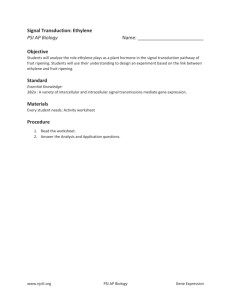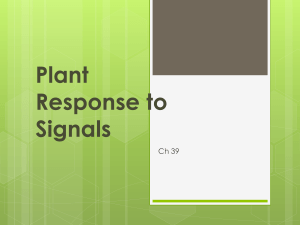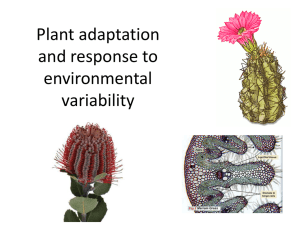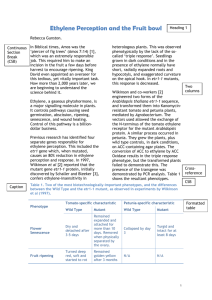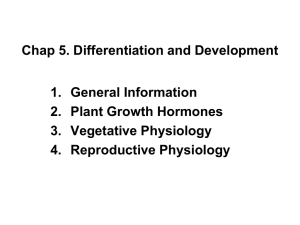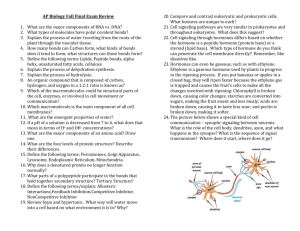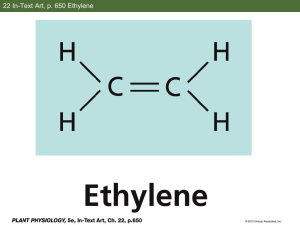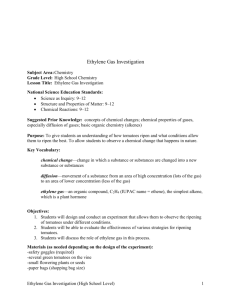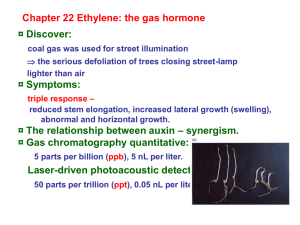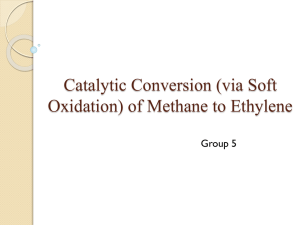Signal Transduction Activity | 56.9KB
advertisement
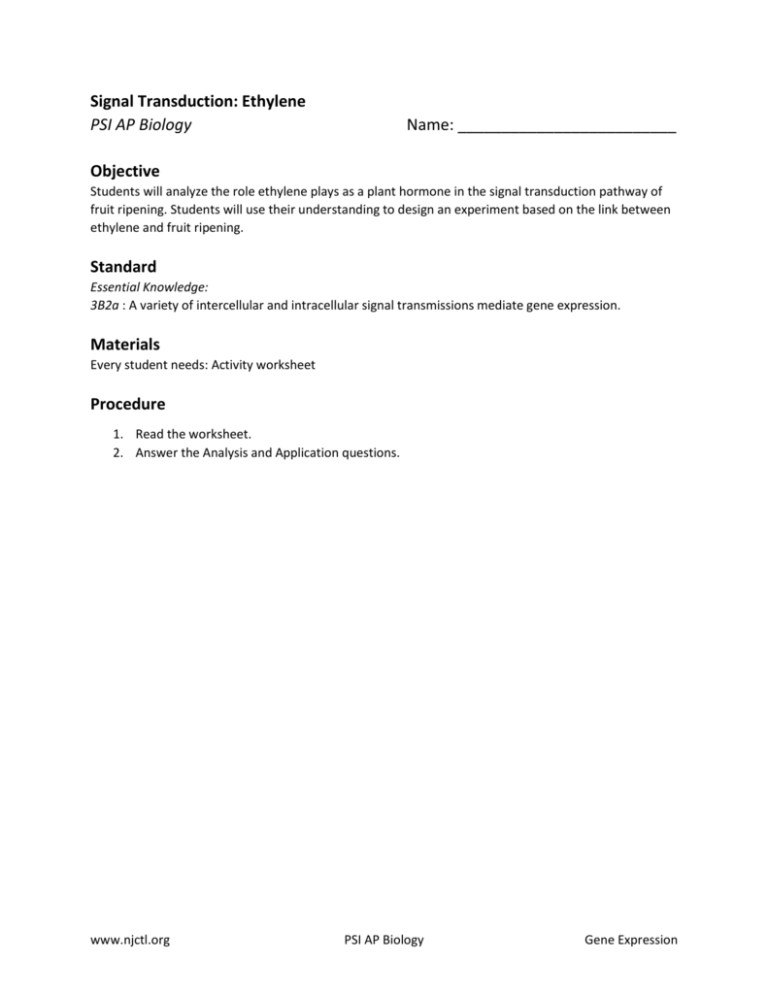
Signal Transduction: Ethylene PSI AP Biology Name: _________________________ Objective Students will analyze the role ethylene plays as a plant hormone in the signal transduction pathway of fruit ripening. Students will use their understanding to design an experiment based on the link between ethylene and fruit ripening. Standard Essential Knowledge: 3B2a : A variety of intercellular and intracellular signal transmissions mediate gene expression. Materials Every student needs: Activity worksheet Procedure 1. Read the worksheet. 2. Answer the Analysis and Application questions. www.njctl.org PSI AP Biology Gene Expression Signal Transduction: The Basics Communication within and between cells occurs via signal transduction. In signal transduction, chemical messengers travel throughout the organism eliciting specific responses. A variety of signal transmission pathways in cells mediate gene expression. The basic signal transduction pathway is shown below: Reception • Signaling molecule is detected by a cell when it binds to a receptor protein. Transduction • Relay molecules within the cell make a series of changes, leading to the response. Response • A specific cellular response is triggered. Hormones are signaling molecules that are produced in one part of an organism and transported to other parts, where a signal transduction pathway takes place. www.njctl.org PSI AP Biology Gene Expression Ethylene Ethylene is a plant hormone that is produced as a gas. Ethylene is an important signaling molecule used in plant senescence (death of a plant part), leaf abscission, and as a response to stress. Ethylene is also used in the process of fruit ripening. Fruit ripening is started by the release of ethylene. Ethylene prompts the translation of specific enzymes that break down the cell walls, softening the fruit. At the same time, starches are converted to sugars, which makes the fruit taste sweet. Favorable scents and colors are created, which alert animals that the fruit is ready to be eaten. While ripening is a signal transduction pathway, it also operates as a feedback mechanism. Ethylene triggers ripening but ripening triggers additional ethylene production. RECEPTION Ethylene is produced. TRANSDUCTION Ripening triggers release of additional ethylene. Specific enzymes are translated. RESPONSE Fruit becomes soft, sweet, and changes color/smell. Practical Applications Several fruits, such as bananas, tomatoes, and pears, are picked while green (not ripe) and treated with ethylene gas later to artificially induce ripening. Carbon dioxide inhibits the synthesis of ethylene. Apples treated with carbon dioxide will ripen very slowly. This process allows apples picked in the autumn to be used in grocery stores the following summer. Aminoethoxyvinyl-glycine (AVG) is a chemical that inhibits ethylene synthesis. It is used on fruit preharvest. The plant will not produce much ethylene so no ripening will occur. Another chemical, 1-methylcyclopropene (1-MCP), binds to the ethylene receptor. The plant will still produce ethylene but no response will occur. This chemical is used postharvest. www.njctl.org PSI AP Biology Gene Expression Analysis Design an experiment based on fruit ripening and ethylene. Title Hypothesis Variables Independent: Dependent: Control (describe at least 2) Describe the control group Method www.njctl.org PSI AP Biology Gene Expression Create a graph/table of your expected results. Label all axes and give the graph/title a name. www.njctl.org PSI AP Biology Gene Expression Application 1. Ethylene and fruit ripening involves what type of feedback mechanism? 2. It is common practice to store fruit in paper bags in an effort to make them ripen quicker. Explain the reasoning behind this practice. www.njctl.org PSI AP Biology Gene Expression Answer Key Analysis Answers will vary. Application 1. Positive feedback 2. Ethylene is a gas. When fruit is stored in a paper bag, the gas can accumulate, making the fruit come into contact with a large amount of ethylene. This will speed the ripening process. www.njctl.org PSI AP Biology Gene Expression
